Composite 'Gothic' armour late fifteenth century, incorporating some elements of the sixteenth and nineteenth centuries
RCIN 72829
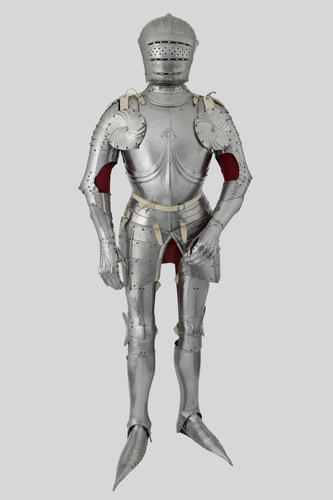
Southern Germany
Composite 'Gothic' armour late fifteenth century, incorporating some elements of the sixteenth and nineteenth centuries
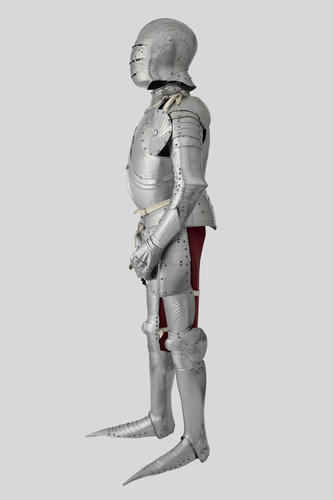
Southern Germany
Composite 'Gothic' armour late fifteenth century, incorporating some elements of the sixteenth and nineteenth centuries
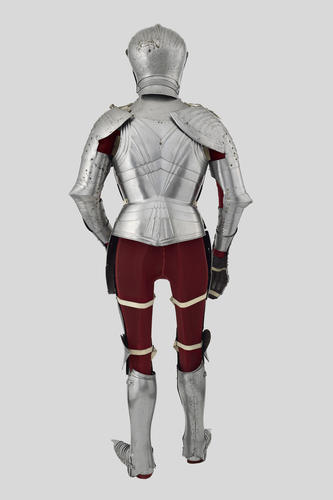
Southern Germany
Composite 'Gothic' armour late fifteenth century, incorporating some elements of the sixteenth and nineteenth centuries
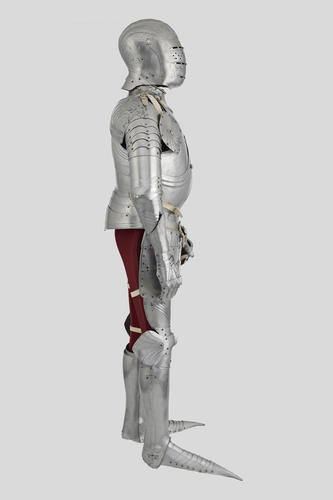
Southern Germany
Composite 'Gothic' armour late fifteenth century, incorporating some elements of the sixteenth and nineteenth centuries

Southern Germany
Composite 'Gothic' armour late fifteenth century, incorporating some elements of the sixteenth and nineteenth centuries
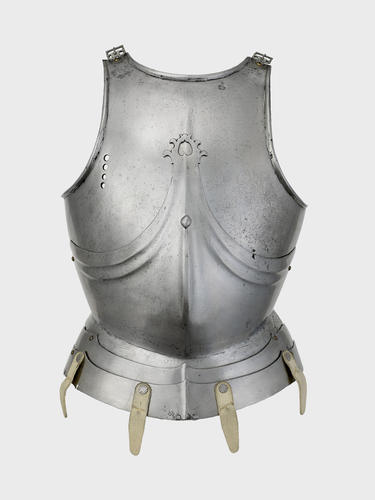
Southern Germany
Master: Composite 'Gothic' armour late fifteenth century, incorporating some elements of the sixteenth and nineteenth centuries
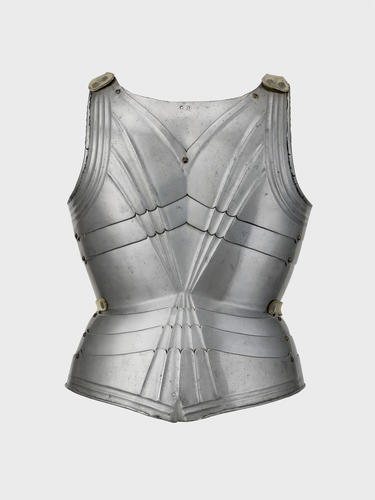
Southern Germany
Master: Composite 'Gothic' armour late fifteenth century, incorporating some elements of the sixteenth and nineteenth centuries

Southern Germany
Composite 'Gothic' armour late fifteenth century, incorporating some elements of the sixteenth and nineteenth centuries








-
Composite 'Gothic' armour mainly South German, late fifteenth century, but incorporating some elements of the sixteenth and nineteenth centuries.
Consisting of a composite visored sallet (South German, early sixteenth century); an articulated gorget (South German, about 1530–40); a composite two-piece breastplate with articulated fauld (German, late fifteenth century); a pair of articulated tassets for tilt use (North Italian, about 1560–70); a four-piece backplate with articulated culet (South German, late fifteenth century); two narrow-fronted pauldrons, not a pair, (German or north-west European, late fifteenth century); a pair of articulated vambraces, (probably partly Flemish, about 1500); a pair of besagues, (partly South German, late fifteenth century); a pair of mitten gauntlets (partly South German, late fifteenth century); a pair of long cuisses with articulated poleyns (partly South German, late fifteenth century); a pair of tubular greaves (partly South German, late fifteenth century); and a pair of articulated sabatons (nineteenth century in the German late fifteenth-century style).
Tests undertaken on the visor, the main plate of the breastplate and the lowest main plate of the backplate of the armour show them to have microhardnesses in the ranges 102–125 VPH, 120–153 VPH and 135–192 VPH respectively. The visor is formed of a medium carbon steel with slag-inclusions. Its carbon content varies between 0.3% and 0.5% in places but shows no evidence of having been subjected to heat-treatment. The breastplate is formed chiefly of iron but has intruded into it a band of iron mixed with carbide particles. These are irregular in shape and slow-etching, suggesting that the metal has not been quenched and overtempered. Overall, the material of the breastplate can be classed as a low-carbon steel that has undergone a good deal of hot-working. The backplate is formed of iron with extensive slag-inclusions.
Text adapted from Norman, A.V.B, & Eaves, I. 2016. Arms and Armour in the Collection of Her Majesty The Queen: European Armour, London.
Metallurgy by Williams, A, & Metcalf, S. 2016. Summary of the metallurgy of European Armour in the Royal Collection. London. Appendix II of Norman & Eaves
Measurements: Helmet: height 26.7 cm, width 24.4 cm, depth 28.6 cm; Gorget: height 16.4 cm, width 36.5 cm, internal diameter of neck-opening 3.5 cm; Breastplate and Fauld: height from shoulders to lower edge of fauld 54.0 cm, width beneath arm-openings 36.8 cm, width at waist 27.6 cm; Right Tasset: height 27.7 cm, width 27.0 cm; Left Tasset: height 27.3 cm, 27.0 cm; Backplate and Culet: height from shoulders to lower edge of culet 52.0 cm, width beneath arm-openings 36.5 cm, width at waist 27.5 cm, width of culet 36.8 cm; Right Pauldron and Vambrace: length 61.1 cm, width 14.7 cm; Left Pauldron and Vambrace: length 54.2 cm, width 14.1 cm; weight 1.080 kg; Right Besague: diameter 16.9 cm; Left Besague: diameter 17.0 cm; Right Gauntlet: 36.8 cm; Left Gauntlet: length 36.0 cm; Right Cuisse and Poleyn: length 48.8 cm; Left Cuisse and Poleyn: length 48.5 cm; Right Greave: length 44.8 cm; Left Greave: length 44.0 cm; Right Sabaton: length 41.1 cm; Left Sabaton: length 42.1 cm.
Weights: Helmet: 2.580 kg; Gorget: 0.974 kg; Breastplate and Fauld: 5.120 kg; Right Tasset: 0.860 kg; Left Tasset: 0.964 kg; Backplate and Culet: 2.810 kg; Left Pauldron and Vambrace: 1.080 kg; Right Pauldron and Vambrace: 1.300 kg; Right Besague: 0.184 kg; Left Besague: 0.227 kg; Right Gauntlet: 0.425 kg; Left Gauntlet: 0.398 kg; Right Cuisse and Poleyn: 0.765 kg; Left Cuisse and Poleyn: 0.836 kg; Right Greave: 0.794 kg; Left Greave: 0.850 kg; Right Sabaton: 0.539 kg; Left Sabaton: 0.581 kg.Provenance
Elements of this armour have been identified as having passed through various London sale rooms between 1840 and 1844, but they repeatedly failed to sell. Subsequently the breastplate and tassets were sold by Samuel Pratt of Bond Street, an antiquarian arms-dealer, to Robert Curzon, later Baron Zouche of Haryngworth. The remainder, most likely fitted with the breastplate and tassets now mounted with it, may have been purchased around the same time for the Armouries of the Tower of London - presumably also from Pratt, who was the Armouries' chief supplier of early armour at that time.
Aside from their possession of upper extension-lames, the cuisses of this armour show a striking resemblance to a pair in the Metropolitan Museum of Art, New York (acc. no. 1983.365-6), which were at one time in the Zouche collection, largely formed with the aid of Pratt. Since only the right cuisse in the Royal Collection, and only the left in the Metropolitan Museum are authentic, it seems likely that they originally formed a pair to one another. Pratt evidently chose for commercial reasons to make two pairs out of one.
The armour can be identified in J. Hewitt’s catalogue of the Tower Armouries of 1859 as Class 2, no. 28: ‘Figure in a cap-a-pie suit of the close of the fifteenth century. The back and breast are articulated, rondels are in front of the arms. The close helmet is of singular form, and made in two pieces only. Some letters are on the visor, of which the import has not yet been ascertained. The sollerets have long, piked toes.’
The armour was one of five transferred from the Tower to Windsor Castle in 1901. -
Creator(s)
(nationality) -
Medium and techniques
Other number(s)







